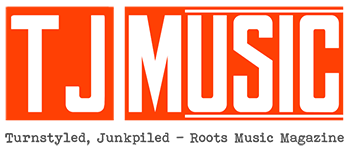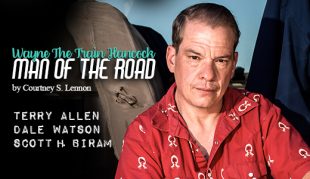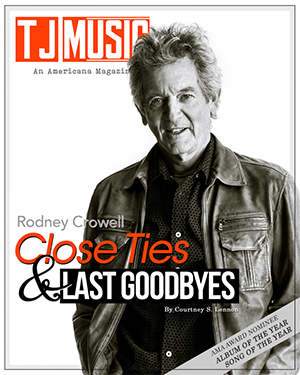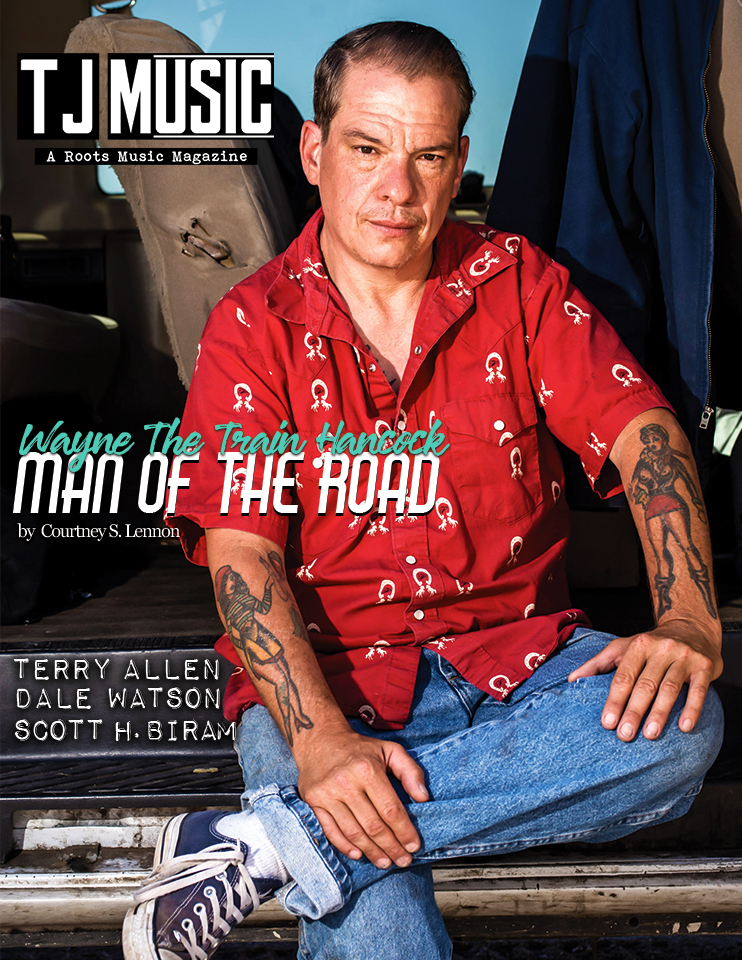
Welcome to our latest e-Zine, Wayne “The Train” Hancock: Man of the Road. TJ Editor, Courtney S. Lennon takes you to hang out with Wayne “The Train,” listen to stories and see him play. She also enlisted the help of Terry Allen, Dale Watson and Scott H. Biram who share stories and give their take on Wayne.
[CLICK TO READ E-ZINE]
Best Viewed on a Computer
For those unable to read the zine on a computer, the feature is below.
Wayne “The Train” Hancock: Man of the Road
By Courtney S. Lennon
Table of Contents
6 Terry Allen
8 Scott H. Biram
10 Dale Watson
It’s seven o’clock on a Saturday night outside Abilene, the only honky tonk in Rochester, New York, a venue that’s hosted Hayes Carll (“Drunken Poets Dream”), and next week, legendary country rocker Jimmie Dale Gilmore with iconic blues blaster Dave Alvin. The night before, Wayne Hancock played at the Ameripolitan Venue of the Year, the Sportsmens Tavern in Buffalo, New York. Unable to see the show in Buffalo, we drive an hour to Rochester for tonight’s. Pulling up to Abilene, the streets are pretty desolate, and the venue looks like an old house. We were supposed to be there at seven, but it’s pretty obvious Hancock and his band haven’t arrived yet. He doesn’t have a flashy bus, just a typical road-dog white van. I shoot over a text, and he calls me.
“Hey, this is Wayne, is this Courtney?”
“Yep, this is Courtney.”
“Sorry I’m not there yet. You know the show isn’t until ten. We’re all here at the motel. Is eight alright?”
“Yeah man,” I tell him. “That’s fine. Is there an opening band?”
“No.”
“You’re going on late. So yeah, take your time and chill. Eight is fine.”
We both had a hard time grasping why the show was so late. My photographer and I sat in the car killing time by listening to the soundtrack to the cult classic CHIPPY for a bit, which has the first recording of Hancock’s “Thunderstorms and Neon Signs.” Then, we wander into the surprisingly small venue, which at best holds one hundred people. There really wasn’t anyone there. Then again, it’s seven thirty at night, and the show isn’t for two and a half hours.
I’d spoken to Hancock a month before for a book I’m writing on Billy Joe Shaver (“Honky Tonk Heroes”) called Live Forever: The Songwriting Legacy of Billy Joe Shaver, a collection of interviews where songwriters give their take on his life and songwriting. Over the years, Hancock and Shaver stomped around the same bars, sometimes playing shows together. They aren’t much akin musically, but they both play their own versions of honky tonk. He had very kind things to say about Shaver as a person, performer and songwriter. I hadn’t ever talked to him before, but he was down to earth, and left a good impression. Still, he had no clue how much I appreciate, admire and respect his songwriting.
2
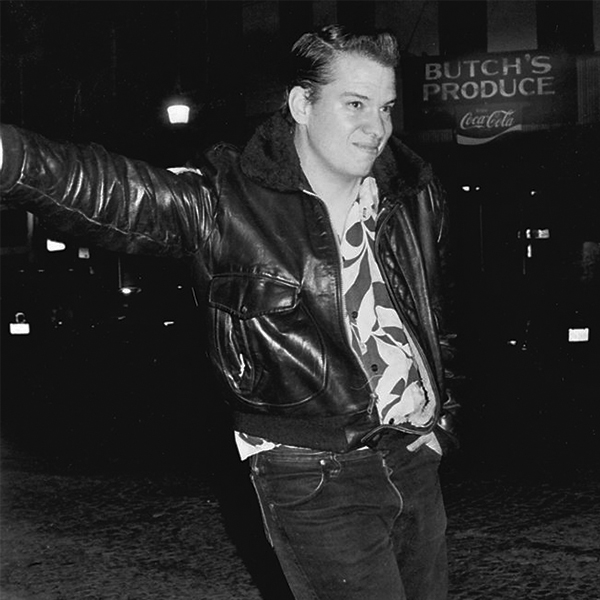
THE KING OF JUKE JOINT SWING
Over the span of his twenty-three-year career as a recording artist, Thomas Wayne Hancock III, better known as Wayne “The Train” Hancock, has proven to be a true original, American and Texan. There’s simply no one else like him. Hancock’s also the type of artist who isn’t reinventing himself. You know what to expect. He’s not going to throw his fans off and give them something they don’t want. He stays true to himself. His catalog is so unique and prolific it ought earn him a rank among legendary Texas singer-songwriters like Terry Allen, Billy Joe Shaver, Guy Clark and Townes Van Zandt. Like Townes Van Zandt, Hancock proves that at only 53-years-old, an artist’s talent and body of work can be so abundant that they still hold their place alongside the greats even if they never penned another song. Hancock and the aforementioned songwriters are all unique and defiantly Texas in their own ways. There is clear distinction between all of them, none of them sounding a like.
Through his career, Hancock has often been compared to Hank Williams Sr. “The only other guy who has more Hank Williams in him than me is Wayne ‘The Train’ Hancock,” says his grandson Hank III. “Very few people can be real purists, Wayne is a purist all the way.”
On his debut album, Risin’ Outlaw (1999), Hank Williams III covered two songs from Hancock’s 1995 debut, Thunderstorms and Neon Signs, the title track, and “Why Don’t You Leave Me Alone.” He also recorded “’87 Southbound,” from Hancock’s sophomore release, That’s What Daddy Wants. While The Train has a throwback vocal style and was initially influenced by Hank Williams, he’s clearly his own artist and his voice has evolved. A lot of people are looking for the next Hank Williams. Wayne “The Train” is the first of his kind. He isn’t writing typical swing, big band or western country music. He incorporates jazz and rockabilly and makes records featuring trombones, trumpets and other brass instruments, which you wouldn’t find on a Hank Williams record. Try putting Hancock in a box. Impossible. Ever since he recorded “Juke Joint Jumping” on Thunderstorms and Neon Signs, he’s been known as “The King of Juke Joint Swing.” He’s himself. In fact, he’s his own genre.
Hancock does follow closer to country themes in his vibrant narrative songs about cheating and violence. Characters end up dead more often than not in his songs, four minute movies that don’t let listeners feed into depression or sulk in their beer. Hancock wraps up a complete story with dark humor within two hundred forty seconds. In the video for “I Killed Them Both,” from Slingin’ Rhythm (2016), he has a song about murder, and the killer’s contemplation of getting killed, or trying to escape, yet in the video, the victims are dolls getting killed in a doll house by a cap gun. Then, as the police move in, they are riding children’s toy cars. The killer dies after being shot at by a cop with a cap gun. The Train somehow makes murder funny. Hard to imagine anyone else doing that. Even when he writes about love, he isn’t typically writing in a way that will make a person wallow in their sorrows. On his 2013 album, Ride, he sings about heartache, but it’s set to an upbeat march, and his singing brings a lightness to the situation. On the chorus, he sings the resolve, “It’s best to be alone/Than to be in love.” The lyrics of the song are fitting, as Hancock is an outlier, living in North Texas, not in any scene. Distancing himself from that, being where he wants to be, not where he should be, shows that a person can create art anywhere, and excel, without being part of whatever group people think he should be in.
3
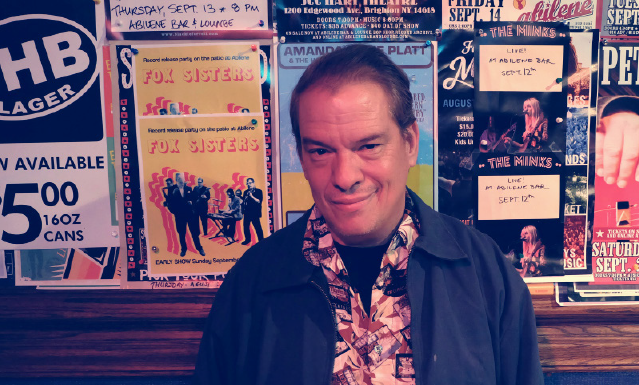
EIGHT PM
Wayne “The Train” gets there right at eight p.m. I introduce myself after a few minutes pass.
“Hi, Wayne, I’m Courtney. Thanks for talking to me for my Billy Joe Shaver book.”
“Yeah. I hope I was helpful.”
“Yeah, turned out great. It starts off with you talking about him shooting a man in the face. You said you wouldn’t want to do it yourself, but you liked it. Then, you ended it saying you hope to be as good a guy as him one day. Like I said, it was great.”
As always, Hancock has on a tropical shirt. He’s not the typical blustery, larger-than-life Texan in a cowboy hat and blue denim snap button shirt. I’m 5’7 and we’re about the same height. He doesn’t have a big personality, nor does he have a heavy drawl. He actually seems a bit reserved, and shy at first.
“Well, alright,” he says, staring down at his feet as he often does. “Have you heard my music?”
“Yeah, um,” I stumble, “that’s why I’m here.” What a perplexing question. I hadn’t ever been asked that before. Every other songwriter assumes this, true or not. So why is he asking?
“He doesn’t want a manager or an agent doing stuff just to promote his career on a bigger level,” offers longtime friend, Dale Watson (“I Lie When I Drink”), who first met Hancock in the early Nineties, when they were both playing bars together in Austin. “That isn’t Wayne’s intention,” Watson continues. “He’s not worried about the success and the stature of it.”
From there, I shift the conversation to legendary Lubbock native pedal steel player and producer Lloyd Maines. He began producing his own music in the Seventies and later branched out with Terry Allen’s seminal 1979 album, Lubbock (on everything). In 2003, Maines won a Grammy award for Best Country Album of the Year for the production of the Dixie Chick’s album, Home. Natalie Maines of the group is Lloyd Maines’ daughter. Hancock first met Maines in 1994, when he was running the sound for the play CHIPPY, and Maines has produced all of Hancock’s albums, dating back to, Thunderstorms and Neon Signs.
On “Railroad Blues,” from his 2001 album, A-Town Blues, The Train jokes, “Well, here we are Lloyd, we’re at the end of another record. Sounds like we got a real good one this time. But folks, you know, we’re supposed to have roughly, forty minutes of music, for you here and Lloyd says we only got 39-and 50-seconds worth, so just for the hell of it, here’s one from us to you. Here’s a song I wrote when I was 23-years-old, called ‘The Railroad Blues.’”
It’s rare to hear him call Maines “Lloyd,” because when he calls him out in songs, as he often does, Maines is always “The Professor.”
“So why do you call Lloyd Maines ‘The Professor?’”
“Well, I don’t really know why, he just is,” Hancock says. “When someone is really awesome, we give them a nickname. He’s The Professor.”
I believe his initial question, “Have you heard my music?” may have been the beginning of an interview on me, to figure out why I’m there to interview him. He was thrown off, didn’t really know what to expect, other than, “This is girl likes Shaver.”
I’m not quite sure that he even knew I was journalist, and probably thought I only write about Shaver. Maines was seemingly a signal that I did know his music, was honest, and there because I wanted to write about him. After that was established, he seems more at ease. He goes into casual conversation, and his personality comes out. He’s genuine, laid back and easy to talk to. He tells me about the issues he has hearing on stage.
“I had to get this new monitor, because a lot of the damn clubs, it’s so loud you can’t hear yourself think. I always try to play quieter than everyone else, and I don’t want to sing off key,” he points out.
“Man, you know, you always have the best bass players.”
“Yeah, you know, my requirement is that my players have to be as good as I am. As good as I hope I am. They have to be that good, and shine as bright as I do. There’s no set way to play any song. There’s the chords, intro, and signature licks on any song but the leads, it’s something to hear who I’m going to call first on those leads.” Even on his albums, Hancock calls out leads. He’ll say, “Wakefield!” in reference to steel player Jeremy Wakefield, steel player Eddie Rivers is “Mr. Rivers,” while Bob Stafford is “Texaco.”
“When I used to see bands play,” he continues, “and the lead singer isn’t very confident, so he’s up there singing, when he goes to call a lead, the lead player starts playing, and the girls look over at him. All of a sudden, the singer cuts off the lead player, jumps back in and pulls him out. I don’t like my players playing the same thing every night. I like them to reinvent stuff. They’re gonna repeat licks, when you have that many songs. Shows are usually two or three hours, so when you’re bangin’ out that many songs, I let my players play as long as they want, and then some.”
At that point he does sound check. The bass is highest up in the mix and stays that way. His guitar is quiet. And he very seriously makes sure he can hear himself.
4
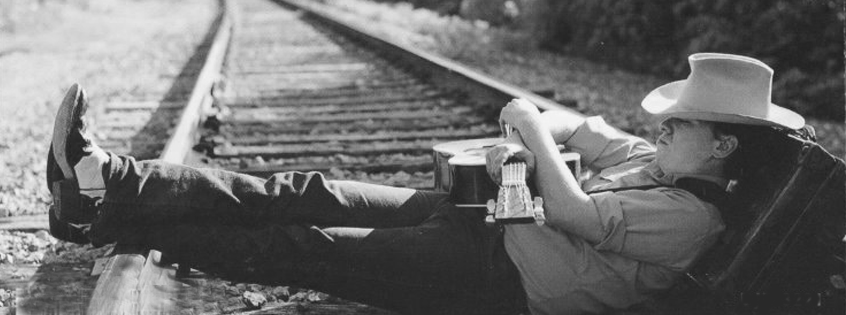
COLD LONESOME WIND
Cold lonesome wind / Take me back home / Back to the country where I belong /
Help me relive those days again / Take me back home/ Cold lonesome wind
We go upstairs to this room, which is clearly part of what once was a house, quiet and the best place to have a conversation. Walking in, Hancock’s little black and white Chihuahua is there jumping around, happy to see him.
“Hey, buddy,” he says.
”What’s the dog’s name?”
“Buddy.”
“Oh, right. Hey, Buddy.”
The way he is around Buddy shows another side of his personality. He’s a warm, good-hearted person. Buddy settles down and sits in a chair, scratching the hell out of it, and then stops and listens. We sit down and have a conversation. The Train seems comfortable with it, not being interrogated with a list of questions, just talking. He’s open, honesty and witty.
“Tell me about your life, growing up.”
“I was born in Dallas, Texas [in 1965]. In 1967, my family moved to New Braunfels, Texas. We moved seven times during my childhood because my dad was a design engineer. He was really smart, and spoke at college campuses around the country about the language of math. My life was constantly uprooted. We went from Texas to Idaho, Texas up to Kansas, back to Idaho, and back to Texas, in Seventy-nine. Because I was always the new kid in school, I didn’t make a lot of friends. I learned to stay to myself, and keep away from the other people. I was a loner.
“As a kid, I started listening to a lot of big band swing, jazz, and Broadway musicals. Jimmie Rodgers, Glenn Miller, Tommy Dorsey, Hank Thompson, and Hank Snow, [because they were in my parents’ record collection]. Those are [still] my influences. In order to qualify to be in my musical library, your career has to go from 1935 up to 1959.
“[When I heard Hank Williams], I got into hardcore, blue collar country. Hearing Hank yodel, I said, ‘I can do that.’ I hated the music that was on the radio, so I started writing songs when I was twelve years old. [Country singers] were always [singing] about this guy, and his old lady’s cheating on him. While she’s with this other guy, and they’re playing around, running around, he’s a man, so he’s just gonna sit there and do nothing about. He’s gonna cry and drink.
“I said, ‘If I ever do country music, it’s not going to be like that. I’m going to write songs that have a moral sense.’ If a guy robs a bank, he’s either going to go to jail, or get killed in a gun fight. Or if someone cheats? There’s no good way out of it. I take that, and run with it. It’s dark humor. I [write] from that point of view. I take Bob Wills’ approach: Play an upbeat, and happy melody no matter how dark the content.
“Because of the way I grew up, I’ve never been able to sit still. When military came up, it was a way to get out of town. I hated school and they weren’t teaching me nothing, so I went to the Navy, and they were out to lunch. Then I went to the Army, I guess they were out to lunch. I didn’t have the grades to mess with the Air Force. I went to join the Marines and they were there. Did four years with them.
“When I was on a six-month deployment at Camp Hansen in Okinawa, Japan, I wrote ‘Cold Lonesome Wind,’ [from Thunderstorms and Neon Signs]. My dad was [also] in the military. He was a World War II veteran, and joined [right before Pearl Harbor, and my parents met after the war]. My dad wasn’t a graphic guy, but he’d describe certain scenarios [using] colorful language. He’d talk about [dark things] like painting a wall with a guy’s blood.
“‘Cold Lonesome Wind’ was my dad’s favorite song. The night he died, I was playing in Minneapolis, Minnesota. I did that song for him. It was a hard song to get through that night.”
5
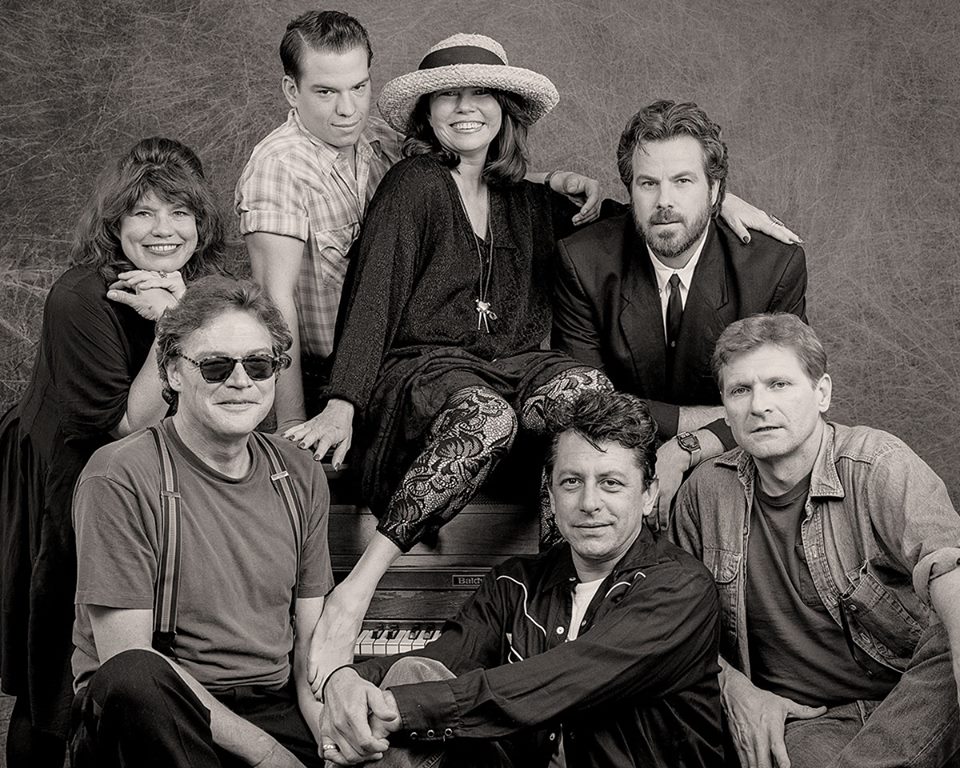
The cast of CHIPPY (clockwise from top left, Jo Carol Pierce, Wayne Hancock, Jo Harvey Allen, Robert Earl Keen, Butch Hancock, Joe Ely, and Terry Allen). Photo by Wyatt McSpadden.
CHIPPY
“I moved to Austin in 1990,” Hancock continues. “I was twenty five years old. When I got to town, I was sleeping on a friend’s couch. There was a big storm moving in, and I went outside to see if I could see the storm, but all I could see were city lights. There was no way to see any lightening. So I sat down and wrote ‘Thunderstorms and Neon Signs.’ A few years later, I met Joe Ely at the [Continental Club]. I had no idea who he was at the time. I had my guitar and was playing in there. This guy walks in, and says ‘You play pretty good guitar.’ I played some songs and he said, ‘That’s really good, let me play you one of mine.’ He played me ‘Me and Billy the Kid.’ I thought it was a really well-written song. From there, everything fell into place, and I got into Terry Allen’s play, CHIPPY. They had me go in [to the studio] and do ‘Thunderstorms and Neon Signs.’”
The script for CHIPPY was written by Lubbock native, visual artist and songwriter Terry Allen (“Amarillo Highway”) and his wife, actress Jo Harvey Allen. The play was based on the diaries of a prostitute who called herself Chippy and had roamed all over the Panhandle of Texas during the Dust Bowl and oil booms. She had two diaries that Terry and Jo Harvey Allen were able to get access and rights to. They were called Parcels from Heaven and Bundles From Hell. After a preview performance in Philadelphia, Pennsylvania they got funding for the production, and enlisted the help of their friends, who attended Monterey High School alongside them, actress Jo Carol Pierce, and singer-songwriters Joe Ely, Butch Hancock, and Jimmie Dale Gilmore, who make up the group The Flatlanders, a band named after the topography of Lubbock. Everyone met up at Ely’s house to discuss the play. They gathered around a pool table, talking about what they might do. The play was based on country music, which they were all very familiar with. Since they were rarely able to get together in the same place, lyrics were sent in via fax, and worked on. The initial run of the play took place at a theater in Philadelphia.
The original set was designed by Terry Allen, who is known to create elaborate art installations that incorporate the various mediums, and media he works with. Allen refers to the different sections of an installation as “stages,” and he treated the theater stage as such, covering it in dirt. He wanted it to capture both the Dust Bowl era, and West Texas terrain. It was a very Terry Allen thing to do, and in his mind, there was nothing odd about it.
In 1994, the performers returned to Philadelphia for a second run. This time, the cast included Robert Earl Keen (“The Road Goes on Forever”), who signed on to play a lawyer. Hancock also joined the cast, playing a character named “Mr. Jukebox.”
“There was a culture of sub violence,” Hancock says. “Mr. Jukebox would show up in a window and sing a song whenever shit got real heavy. Either ‘Thunderstorms and Neon Signs,’ or ‘Back to Black,’ which Terry Allen wrote [for me to sing]. I got lucky singing that tune.
“Working with Terry is like working with a big kid. A really cool older kid, the cool older guy. The theme from CHIPPY, was ‘Fate with a capital F.’ Terry Allen, he’s a big artist and he was doing art exhibits, and he said ‘Art with a capital F.’ That’s the kind of guy he is, super fun loving. I love him.”
6

Photo by James Bland
TERRY ALLEN
“Jimmie Dale Gilmore originally played Wayne’s character, Mr. Jukebox,” Terry Allen says. “Mr. Jukebox never had much of a dialogue. He was just a mechanical presence that would show up in the window, and play a song that would go with a scene happening in front of it. Jimmie couldn’t do it because he just got this record [Spinning Around the Sun] that was really moving and his manager didn’t think being in a play about a whore would be good for his career.
“When Jimmie left, we said ‘Who are we going to get to be Mr. Jukebox?’ Joe had seen Wayne at the Continental Club, and he said ‘Man this guy sings just like Hank Williams, he would be perfect.’ So that’s how Wayne enters the picture. We didn’t really know him. We found out he’d been living in his car, sleeping on a drummer named T.J. McFarland’s couch. We got Wayne to come in and sing ‘Thunderstorms and Neon Signs.’ It blew us away. Everything he did, and his whole presence blew us away. He’s a wonderful songwriter. I love his songs, and he has this incredible range of types of songs, and what he can do with his voice. And Wayne is hilarious. [Actor] Barry Tubb [who was in the cast] called him ‘Six-Toed Monkey,’ which Wayne didn’t really care for. They came to blows several times because of smart ass stuff like that.
“When we were doing the play in Philly, at a theater called The Plays and Players, we stayed five blocks away at this really old, beautiful hotel called the Barkley Hotel. It was during the O.J. [Simpson] Bronco chase, so we’d finish rehearsing, and then go watch the Bronco.
“We had to watch out for Wayne. He was an innocent in the woods. At the time, he was going with a blues singer named Sue Foley, and she called Wayne her ‘Little Hillbilly Boy.’ When he came to Philly, he hadn’t been in a big city like that. If Wayne went and got drunk, we’d have to find him, and make sure he didn’t get killed out in the streets somewhere.
“Jo Harvey really loves Wayne. She said that every night, when she was getting dressed for the show, she had her door cracked, and Wayne was out in the hall, singing all these incredible songs from the Thirties and Forties, and he’d talk about how he’d like to do these big orchestral arrangements of the songs.
“We took it to New York and did it at the Lincoln Center during the Serious Fun Festival, and the critics basically slaughtered us. I think a lot of it had to do with the dust in the theater. That outraged a bunch of people. Being from Lubbock, we were all used to dirt. The east coast audience were not. It was an intense time, but it was wonderful time for everybody.”
“Wayne is so what he is, and that’s the great thing about him. Anybody who wants him to be something different, they’re in for trouble.”
7
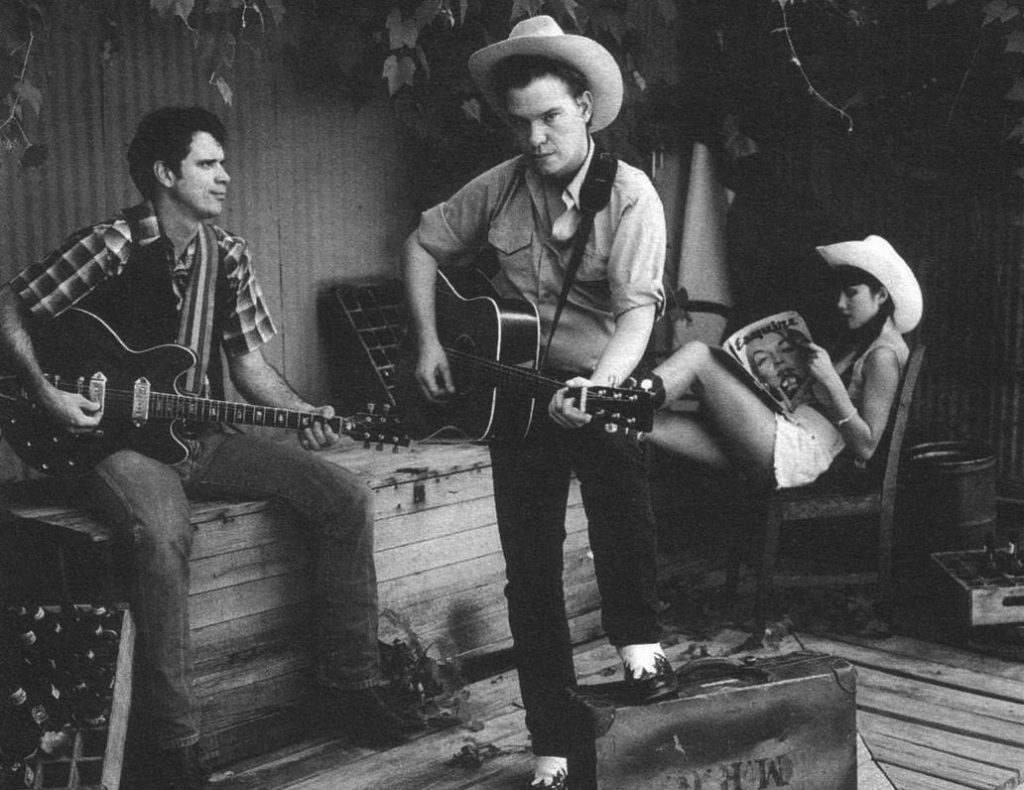
THUNDERSTORMS AND NEON SIGNS
There’s big black clouds blowin’ in from the west /I’ve been drivin’ all day lord, I sure could use some rest/ There’s a motel up ahead where I can unwind/Cause I sure love thunderstorms and neon signs I grew up on the road from town to town/My daddy’s line of work kept us movin’ around/I got fond memories of the way things were back then/ The warmth of the neon when a bad storm was movin’ in
“Because CHIPPY was on Broadway, of all things, ‘Thunderstorms and Neon Signs’ attracted quite a bit of people,” Hancock says. “I met Lloyd Maines there. He was running the studio for Joe [Ely]. He played steel in CHIPPY. Lloyd liked my singing and my playing, so I talked to Steve Wilkerson at Deja Disc. I did the record with them. I think it sold 22,000 copies the first year, which is a pretty good amount, because I remember the guy telling me, ‘We got this guy, he sold two or three thousand records.’ That’s a lot of records if you’re not in the industry, not to have that machine behind you, so that’s quite a number.”
While Hancock may have been getting lost and wasted while he was in CHIPPY, he got sober before he began recording Thunderstorms and Neon Signs. The song “Double A Daddy” addresses his drinking and sobriety. He sings, “I drank so much that I thought I couldn’t quit/Now that I’m done, I’m gonna stay legit/I’m a Double A daddy, I’m sober all the time/Look out momma cause I’ll take you on down the line.” The song shows that he is able to talk about his own struggles in a way that lacks self pity, nor does it beg for empathy. Rather, he deals with the issue through satire.
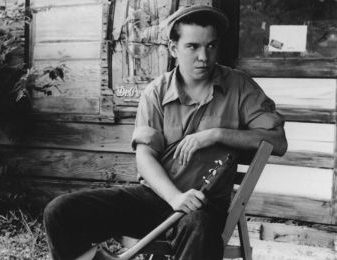 Thunderstorms and Neon Signs set the groundwork for what Hancock’s sound would be. He takes elements of his musical influences and mixes them together. It creates a vintage feel, that recalls Sun Records recordings. His stripped-down rhythm section, allows his voice to be at the forefront, while the bass slapping and bounce, make the songs danceable. He achieves this, by recording his albums live.
Thunderstorms and Neon Signs set the groundwork for what Hancock’s sound would be. He takes elements of his musical influences and mixes them together. It creates a vintage feel, that recalls Sun Records recordings. His stripped-down rhythm section, allows his voice to be at the forefront, while the bass slapping and bounce, make the songs danceable. He achieves this, by recording his albums live.
“Some people record in layers,” Hancock says. “They put the drum down, then the bass. I imagine that’s why it takes weeks upon months of recording. When I get in the studio, I can’t stand being there more than a couple days. I wanted to do it the way they used to do in the Thirties, Forties, and Fifties, when you had to be able to do up to five songs in three hours of recording. I wanted to reproduce the sound I play on stage, because I always figured, Well, that’s good enough music. When we would record in normal studios it always sounded a little dead. Especially when I was doing demos for RCA and Electra Records back then. So I didn’t want anything to do with the way the industry did it. If you record live, and you capture the songs live, then you can reproduce that sound when you play on stage.
You go see bands live, and it sounds great. Then you listen to the record, and it might sound great too, but it’s different. It’s got a deader sound to it. I record in mono because if you play music on your stereo, it’s got all these cool leads, but you can’t hear it because one of the speakers is out. That happens to me. I’ll be listening to some album, and the whole lead will drop out because the speaker isn’t working. So I started recording my albums in mono.”
8
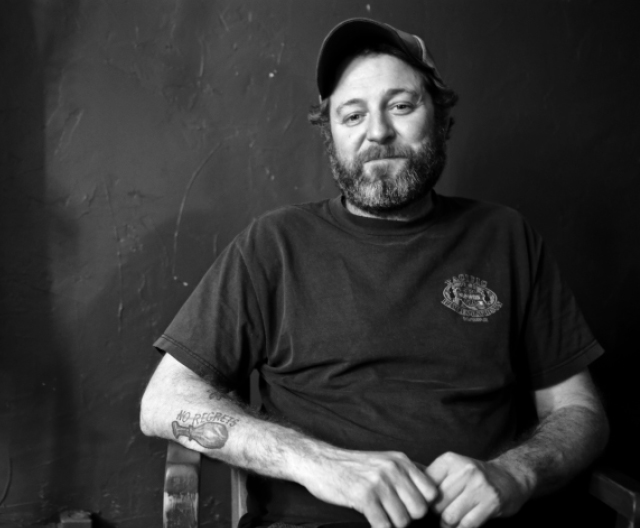
Photo by Nate Burrell
SCOTT H. BIRAM
“During the time Wayne was recording Thunderstorms and Neon Signs, we met at a bar in San Marcos, Texas,” Austin, Texas-based acoustic blues punk rocker Scott H. Biram says. “All of the pictures on the album were taken in San Marcos. Wayne wasn’t drinking at the time.
I didn’t know that, and I said ‘Wayne, let me buy you a drink.’ He said, ‘I don’t drink,’ and he fell off the stool. He was fucked up on something else. He’s been on and off all kinds of different things in his life, and he’s had some substance abuse problems, but he still doesn’t drink. He smokes weed.
He used to buy weed from my friend. I’d take Wayne over there. My friend and I would say [under our breath], ‘That’s Wayne ‘The Train’ Hancock.’ There’d be Wayne ‘The Train’ Hancock sightings all over town. You’d see him driving around in his van, with a whole rack of Hawaiian shirts in the back. He’s always been a character.
“When I hear Wayne’s voice, he takes me back to the old-time soda fountain. I feel like I’m going back in the Fifties when he’s singing. When I first started hearing Wayne, he struck me as a Hank Williams copycat, but within a few songs you start realizing it’s much more than that. He has that old-timey voice like Hank, but he has all kinds of influences and styles mixed in with his music. It’s not just country, it’s something else. He’s a savant as far as his music goes. He’s western swing, but I wouldn’t ever say Wayne ‘The Train’ Hancock is a country artist. You can’t corner him.
“Wayne has always treated me with a lot of respect. He was concerned one night, because I was playing before him. He was making sure I knew that I deserved to be headlining as well. We got a good laugh in.
“Wayne is a funny guy. He’ll walk up to you before every show, like he knows something you don’t know. And I have a feeling he does.”
Wayne always come across different from his personality than his music. His normal personality comes out when he’s talking on stage between songs. That’s when you see how he is off stage, but when he’s mid song, it’s a totally different attitude and feel. He’s committed to that. It’s part of him, and it’s nothing he can control. It’s crazy, the way he plays his guitar, he’s rhythm guitar. He’s playing jazz chords, but he’s slamming the shit out of the strings with his fingers. He’s got tape around his finger tips and is just banging it out. It’s crazy.
He’s extremely serious about his music and songwriting. He’s been doing it for so many years. It’s his day to day job. He just goes and plays the music and keeps it as simple as possible. He’s concerned with his band playing, the way he wants his players to play, and how he wants the sound on stage. He’s very strict about it. His guitar player told me he was playing, and Wayne said, ‘Nope, no bend. No bending your strings. That sounds too Nashville.’”
9
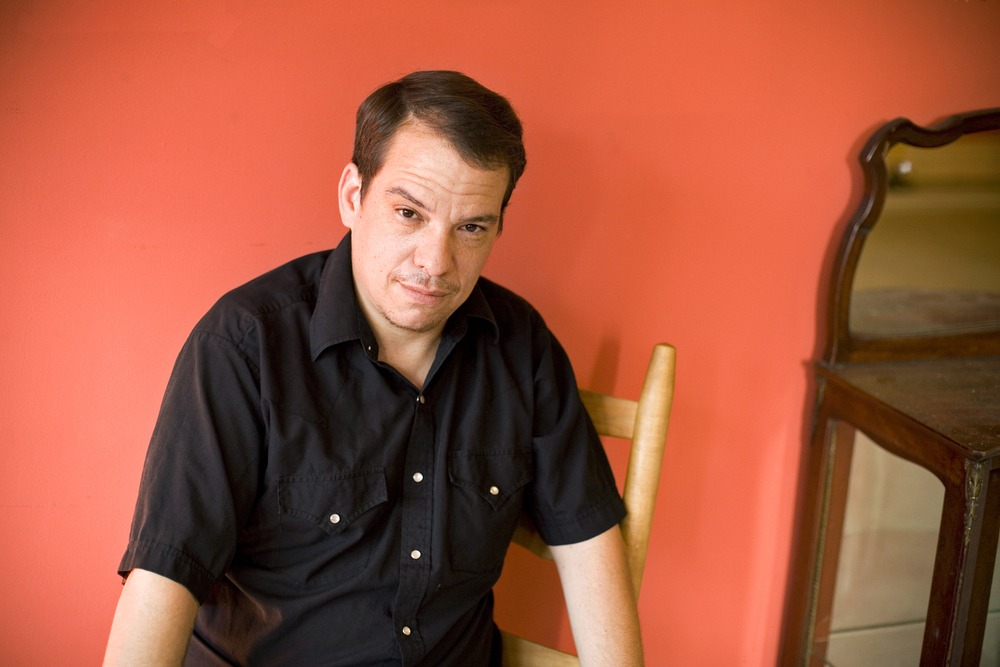
THAT’S WHAT DADDY WANTS
The follow up to Thunderstorms and Neon Signs was Hancock’s 1997 album, That’s What Daddy Wants, released on Ark 21 Records. The album features the Hancock classics, “‘87 Southbound,” and “Highway 54.” Hancock traditionally doesn’t use drums on his records, allowing the upright bass and his guitar to act as the percussive rhythm section, which creates his signature sound. Listen to his entire catalog, the only time you’ll hear a drum solo is on, That’s What Daddy Wants. You also won’t find him singing punk rock, with the exception of “Brand New Cadillac,” a 1959 song written by written by Vince Taylor, and most notably covered in 1979, by the Clash on London Calling. In 1994, Brian Setzer covered the song on his album, The Brian Setzer Orchestra. Hancock covers the song on That’s What Daddy Wants, essentially doing a cover, of a cover, of a cover. Something is off. The song seems out of place. Clearly not the work of Lloyd Maines.
The garage rock instruments are so overpowering on the track, Hancock screams out the lyrics. He sings the first verse, the duration of which is roughly forty seconds. Then he falls out, and in comes a three-minute swell of solos. At no point does he call out a drum solo, yet, there it is. The break goes on so long, one just assumes The Train is finished, that by then, it’s an instrumental. But with fifty seconds left, the solos stop, and The Train comes back. At the conclusion, there is a thought: This song makes no sense.
Hancock isn’t one to throw off his fans, but closing out the album with “Brand New Cadillac” leaves one wondering, Is he going in a new direction? No. It’s obvious that someone meddled in what ought not be meddled with, trying to fix what wasn’t broken. In turn, this outside force ruined Hancock’s sound. Who did this to The Train, and why?
“That was Miles Copeland, and that was the last guy I recorded drums with,” Hancock explains. “Miles was Sting’s manager. I only know Sting because I remember the songs he had in the Eighties and all that, but I don’t know much more than that,” he says, looking uncomfortable, as if he’s embarrassed to admit he once heard a Sting song. He doesn’t listen to it, and doesn’t want to be associated with it. This is clear.
“So Miles, he’s this big millionaire guy who knows how to make money. That doesn’t mean that he knows how to make music. He said to me, ‘You can’t command respect without drums.’ I said, ‘What-the-fuck-ever, dude.’ He said, ‘You know that song, ‘Brand New Cadillac’ that Brian Setzer sings?’ He was name dropping. I said, ‘Yeah, I know Brian, he’s a good friend of mine.’ He said, ‘Well you could never do that song because you’re a country singer,’ which is a stupid fucking thing to say, and the reason I recorded that song the way that it’s recorded. It has all these drum solos and shit. They’re on the entire album. ‘Misery’ sounds like Phil Spector produced it. Everything on the album is exaggerated. Outrageously, as fate would have it, everyone loves [‘Brand New Cadillac’]. They always want me to do it. I won’t. I totally ripped that song off of Brian Setzer. I told him, ‘Hey man I ripped off this song.’ He said, ‘Ah, that’s cool man.’ I’ll play ‘Misery,’ but I will not play that song.”
10
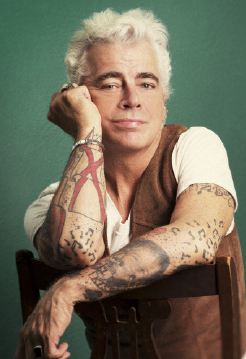
Photo by Sarah Wilson
DALE WATSON
“Wayne goes to the beat of his own drum,” Dale Watson says. “He’s an independent man. That’s how he is in life. He’s not going out there trying to push songs for other people to record. He doesn’t care what’s popular or mainstream, or what people think he should do. He’s not worried about the money. He does what he does. He just wants to play his music for an appreciative crowd. When they have him open in front of bands, where it doesn’t make sense, it frustrates him. ‘Why are you putting me in front of people who don’t like my music? Just put me in a little bar somewhere, where there’s people who are enthusiastic.’ That’s where he’s at home. Wayne and I have a tour coming up, [in October]. When we play together, I hate following him, but it’s a friendly type of hate. He’s so damn good, it’s hard to go to an audience after he’s played.
“Wayne was brilliant out of the gate. When I first heard him, it was hard to tell which songs were his, or which ones were old Hank songs I’d never heard at the time. He obviously has a heavy influence from Hank Williams, Jimmie Rodgers, and Ernest Tubb, but his music doesn’t sound like any of theirs. He’s got his own thing.
The mainstream ignores all of this music. They think it’s oldies, and it ain’t. [In 2013], I started the Ameripolitan genre because I thought, We’re getting wet. We’re getting no love over here. We’re getting ignored, like an old violin that don’t work no more.’ Outlaw country, western swing, rockabilly, honky tonk, wasn’t represented by any genre. Wayne is the perfect example of the natural growth of our influences. He stands out, and he could win an award in all four categories. Wayne’s won for honky tonk [2014], and rockabilly [2016]. The fans nominate and vote. They love Wayne. They gave him the awards.”
“Those are the only awards he’s won,” I point out.
“Really?” Watson asks.
“Well, when he was eighteen-years-old, he won a [Wrangler Country Showdown] contest. But other than that, so far as I know, the Ameripolitans are the only awards he’s gotten.”
“That’s ridiculous.”
11
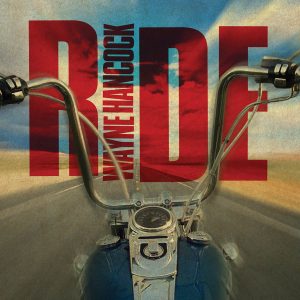 APRIL 26, 2014
APRIL 26, 2014
Hancock’s 2014 Ameripolitan Award coincided with his 2013 release, Ride. The cover is ominous, as it is a picture of a motorcycle, and the title track is about riding one. But just a over a month after Watson’s inaugural Ameripolitan Awards, which took place February 18, in Austin, Hancock was involved in a life-threatening motorcycle accident. When he recalls the events, it isn’t at all painful for him to talk about, and he’s even able to make jokes about it.
“I was riding [my bike] with a bunch of my friends. We were all doing about 85 mph down Farm Market Road. All of a sudden, I hear a ‘pop’ where my neck bearings are on my motorcycle. They started doing death wobbles. Death wobbles at 85 mph are bad. The bike was shaking, so I tried to slow it down. My friend was riding next to me, and a car was coming. I wasn’t going to take my brother out, so I took it to the bar ditch, off to the side of the road.
“Harleys don’t like to fly. I turned mine into an airplane. I flew a hundred yards off the highway. I never passed out, [so] I remember going up in the air, looking down, and seeing shit pass under me. I’m [still] on my bike, and it was coming down sideways, at an angle, so I kick my feet out from under it. Then, at the impact, I was bouncing really hard. I picked myself up, looked at my arm. It was twisted the other way around. I dislocated my elbow.
“I had a helmet on. I took it off, and started feeling my face, to make sure everything’s where it’s supposed to be. I remember sitting in the field, talking to the Lord, saying, ‘Well, I guess my brothers will find me or the ants will.’ That’s a terrible thing to think, but if it’s summertime in Texas, it’s true.
“Right around the corner come a few bikes. The president of my club works in a hospital. He’s an RN in the [emergency room]. He was there on hand, and was helping me sit up. He asked me ‘Should I call 911?’ I said ‘Yeah,’ right about the time my lung collapsed. It was a close call.
“I was supposed to go on tour the next week. In my mind, I thought ‘I’ll just go down to the hospital, and get a cast. I can still play my guitar.’ I wake up the next day, and there’s all these people in my room. My first thought was, he jokes, Well I must be alive, or none of you guys would be here.
“I broke eight ribs, fractured four more, cracked my sternum, and [wound up with] internal damage. I punctured my left lung. My lung never fully inflated, so I don’t have as much air as I used to. I still have a good voice, but it’s hard for me. I can’t hold it quite as long as I used to.”
12
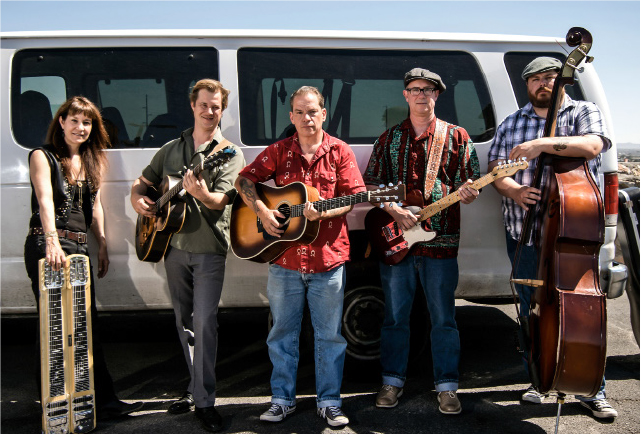
Photo by, Victor Barajas
LIFE ON THE ROAD
“So,” I ask, “what can we expect next?”
“I’m working on a new record,” Hancock says. “Go back and listen to all my records, you’re gonna get more of that. I want to call it Diner Boogie, Diner Swing. The song’s about, being on the road, and all the places we like to eat at. And they’re not special places, just places we like to eat at. I name them off, TA, Waffle House, Perkin’s, Black Bear Diner. I’ll sing some of it if you want.”
“Yeah, man, that’d be awesome.”
“Well me and my band we play all night long/We don’t get to sleep til the break of dawn/I know a lot of places coast to coast/But let me tell you bout the ones that I dig the most/TA, Country Pride, eggs and bacon on the sunny side/Waffle House you can’t go wrong cause those cats be cookin’ all night long/Let’s all dance til the late night brings, diner boogie, diner swing.”
This is about as real as it gets. He’s on the road all the time, that’s day to day life. When he sings it, it’s easy to pick up on the humor. There are a lot of guys you talk to, and you can tell they have an ego. You have to call them by their last name. I referred to him as Train several times, and he did not correct me. He’s the only songwriter I’ve hung out with who made me comfortable enough to ask a silly question. My photographer pulls out his phone and pulls out the cast photo from CHIPPY.
“So we’ve wanted to know the answer to something here. We figured, The Train is the person to ask, because you’re an impartial source.”
“Okay,” he says, looking at the picture, likely tripped out, not having seen it in years.
“Have you or anyone else noticed that Jo Carol and Jo Harvey look like sisters in this photo? They don’t in real life, but in this picture. Anyone notice that?” At this point, he likely thinks I’m crazy, but goes along with it, probably because he’s incredibly stoned. He really does think over the question.
“No, never really noticed before, but yeah, I see what you’re talking about.”
“Okay, well thank you for settling things.”
Never had I done anything like that before, but Wayne “The Train” is a down to earth, cool cat, who can laugh off a goofy question, and not be too good for it. In fact, he tells me a hilarious story about the play after. He’s real, and genuine. I respect the hell out of the guy.
13
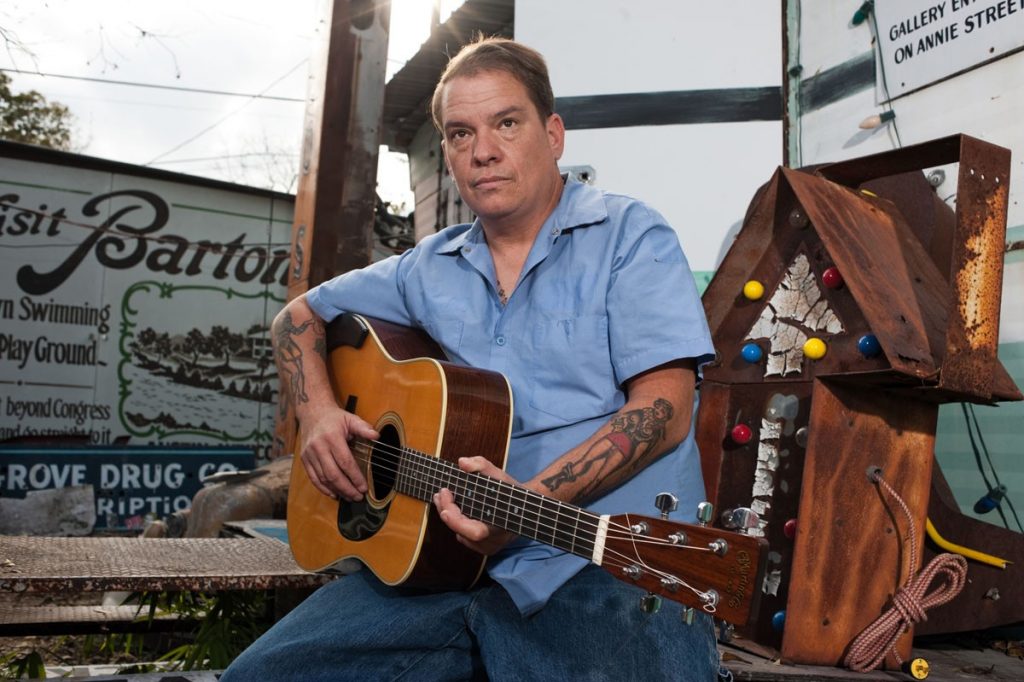
SLINGIN’ RHYTHM
Hancock does indeed beat the shit out of his guitar, and roughly thirty seconds into the first song, he breaks a string. It seems like a regular occurrence, and Hancock sings about it on the song “Two String Boogie,” from his latest release Slingin’ Rhythm. While he fixes his guitar, the band continues to play, as if it’s a regular occurrence.
Scoping out the room there’s about thirty people there, who are all engaged. I thought, This is really crazy. Where is everyone?
Past their bedtime? Then I realized, I could see
Wayne “The Train” with no distractions, and no one blocking my view. Wayne takes a break, then, he plays for another hour, even though half the people left. He doesn’t seem to care at all. As long as there are people who appreciate his music, he’s going to play.
The next day, I talked to a friend who saw him in Buffalo at the Sportsmens, a venue that holds a few hundred people.
“How many people were at the Sportsmens show?”
“It was packed.”
“I just saw him in Rochester with thirty people there. What the hell was that about?”
“Some people just don’t know good music.”
“Man it was incredible to see him someplace like that. I was standing next to him, I said ‘This is one of the best shows I’ve ever seen. Top five.’ I’m a writer, so I’m not supposed to say that. I just thought he should hear it. How much I appreciate his music.”
“If I was standing next to him, I would have said the same damn thing. I’m glad you did. He should hear it.”
Courtney S. Lennon
Latest posts by Courtney S. Lennon (see all)
- Billy Joe Shaver: August 16,1939 – October 28, 2020 - November 2, 2020
- You Are About To Become Involved With Van Dyke Parks! - July 13, 2020
- The Hero of Texas Music History - July 23, 2019
